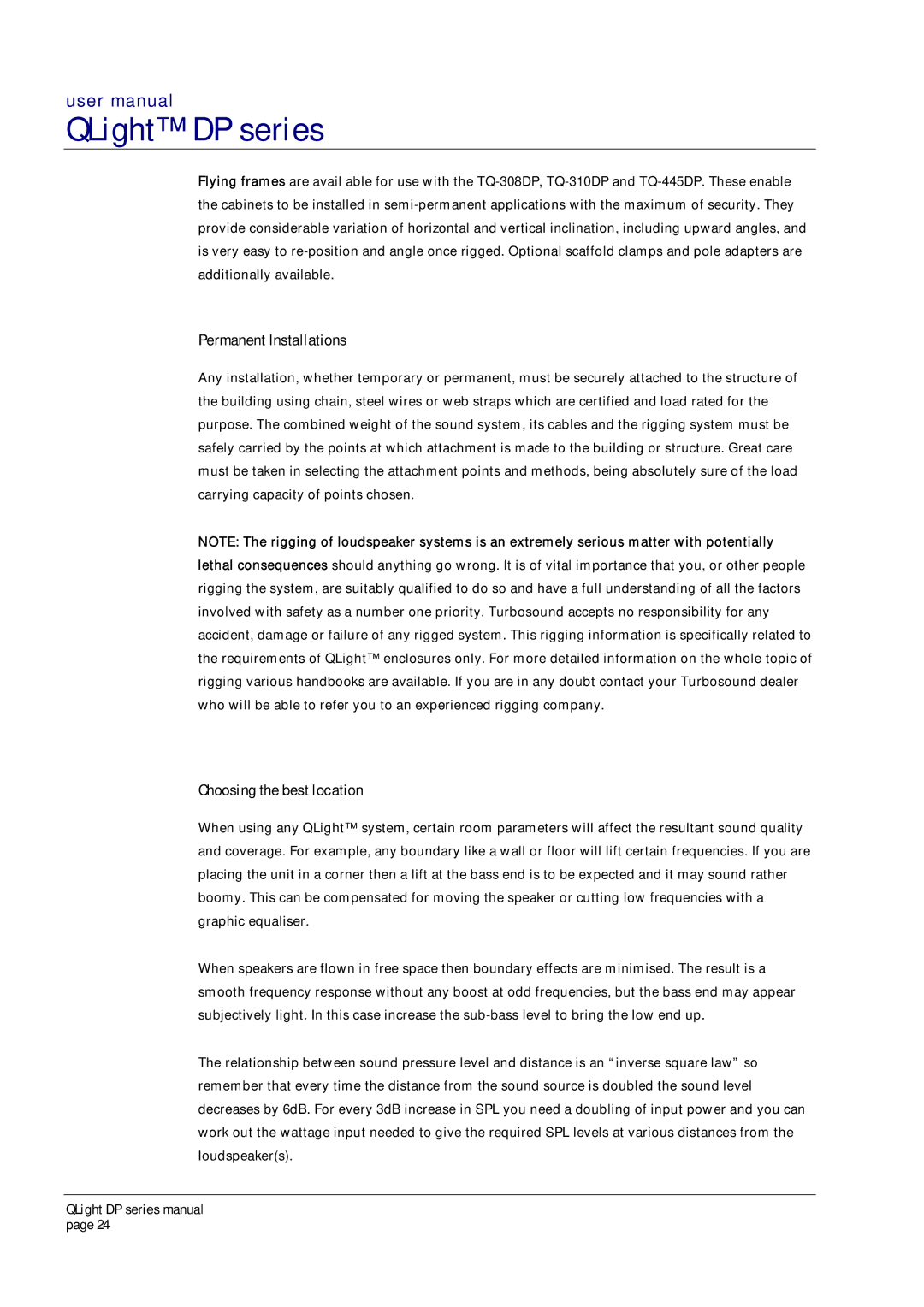
user manual
QLight™ DP series
Flying frames are avail able for use with the
Permanent Installations
Any installation, whether temporary or permanent, must be securely attached to the structure of the building using chain, steel wires or web straps which are certified and load rated for the purpose. The combined weight of the sound system, its cables and the rigging system must be safely carried by the points at which attachment is made to the building or structure. Great care must be taken in selecting the attachment points and methods, being absolutely sure of the load carrying capacity of points chosen.
NOTE: The rigging of loudspeaker systems is an extremely serious matter with potentially
lethal consequences should anything go wrong. It is of vital importance that you, or other people rigging the system, are suitably qualified to do so and have a full understanding of all the factors involved with safety as a number one priority. Turbosound accepts no responsibility for any accident, damage or failure of any rigged system. This rigging information is specifically related to the requirements of QLight™ enclosures only. For more detailed information on the whole topic of rigging various handbooks are available. If you are in any doubt contact your Turbosound dealer who will be able to refer you to an experienced rigging company.
Choosing the best location
When using any QLight™ system, certain room parameters will affect the resultant sound quality and coverage. For example, any boundary like a wall or floor will lift certain frequencies. If you are placing the unit in a corner then a lift at the bass end is to be expected and it may sound rather boomy. This can be compensated for moving the speaker or cutting low frequencies with a graphic equaliser.
When speakers are flown in free space then boundary effects are minimised. The result is a smooth frequency response without any boost at odd frequencies, but the bass end may appear subjectively light. In this case increase the
The relationship between sound pressure level and distance is an “inverse square law” so remember that every time the distance from the sound source is doubled the sound level decreases by 6dB. For every 3dB increase in SPL you need a doubling of input power and you can work out the wattage input needed to give the required SPL levels at various distances from the loudspeaker(s).
QLight DP series manual page 24
